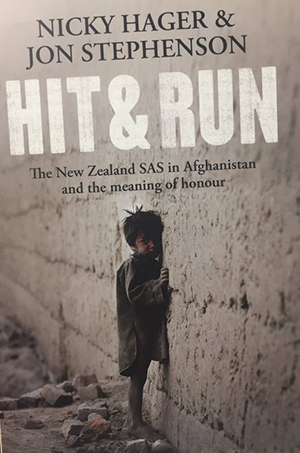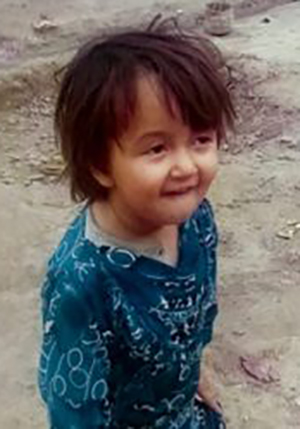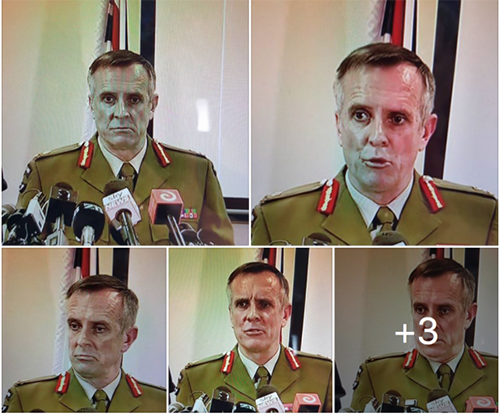By Nicky Hager and Jon Stephenson
The Chief of Defence Force Lieutenant-General Tim Keating presented the NZ Defence Force response to the book Hit & Run at a press conference on Monday, 27 March 2017. For 45 minutes he and his colleagues suggested that everything in the book was incorrect.
The Hit and Run authors have now had time to study the defence chief’s statements. Our conclusion is that the NZDF criticisms are wrong – with one exception – and that they have failed to address almost everything of substance in the book.

This is what a cover up looks like.
READ MORE: Villagers say both NZDF and authors wrong on village names – but confirm civilian deaths
1. The raid described in the book “is not an operation NZSAS conducted”: INCORRECT
The information presented in Keating’s press conference leaves no doubt that the book and the defence chief are talking about the same raid. Keating gave the name of the raid (Operation Burnham), the times and date (12.30-3.45am on 22 August 2010), the location in the Tirgiran Valley, and said the SAS arrived in two Chinook helicopters, used SAS snipers, found a quantity of ammunition in one building and had one SAS trooper injured by falling debris.
All of these are details of the SAS raid publicised first in chapter 3 of the book. There were not two different raids with the same operation name at the same time in the same valley. It is obviously the same raid.
An NZDF power point presentation shown in the press conference showed three main SAS objectives in the valley called A1, A2 and A3. The book had already identified the SAS’s main targets as being the house and guest house of an insurgent named Abdullah Kalta and the house of an insurgent named Naimatullah, neither of whom were present during the raid.
The NZDF objectives A1 and A2 are the buildings belonging to Abdullah Kalta seen in a photo on p. 60 of the book and NZDF objective A3 is the house of Nematullah shown on pp. 39 and 60 of the book.
2. The SAS raid was in a different village with a different name: INCORRECT
The defence force claimed that the SAS raid occurred in a village called Tirgiran, not the villages of Naik and Khak Khuday Dad named in the book. This is not true. The locals know the names of their own villages and they are called Naik and Khak Khuday Dad. The raid occurred there.
3. The SAS raid was about two kilometres from the position we gave in the book: CORRECT, BUT DOES NOT CHANGE THE STORY IN ANY SIGNIFICANT WAY
After the NZDF press conference, Nicky Hager said that the authors stood by the whole story and that at most the NZDF denials might mean that the events in the book occurred two kilometres from where we thought they were, ie. a slightly different location in the isolated mountain valley.
We have checked the NZDF maps shown at the press conference and it appears the location of the raid and the villages is indeed slightly different to what our local sources told us. But the villages at that location are definitely called Naik and Khak Khuday Dad, and all the rest of the story in the book is unchanged.
Likewise the photos in the book of the villages attacked in the raid are correct, as are the photos of the victims and destroyed houses.
The Defence Force leapt on this and tried to sow doubt about the rest of the book. Keating said the “central premise” of the book was incorrect; that there were “major inaccuracies – the main one being the location”.
But the location is a minor detail, difficult to establish in mountains with no roads or detailed maps (there are no known maps of the valley that include the locations and names of the villages along it).
Contrary to what Keating said, the central premise of the book is that the actions of the SAS and its allies in the villages of Naik and Khak Khuday Dad led to civilian deaths and injuries, destruction of houses, neglect of wounded people and then a cover up – and none of that has changed.
4. The NZDF has now replied to the allegations in the book: INCORRECT
The defence force has not replied to most allegations in the book. Most strikingly, Keating’s presentation did not address the deaths and injuries suffered by children, mothers and elderly people who were obviously not insurgents – which are the most important allegations in the book.

The allegations that the defence force has avoided or answered inadequately to date are:
- SAS-controlled attack helicopters fired at civilians in Khak Khuday Dad village with many casualties, including the three-year-old child Fatima;
- SAS snipers appear to have shot at least one civilian, a recently graduated school teacher home on holiday;
- SAS-controlled attack helicopters pursued two farmers who opposed the Taliban along the valley and killed them;
- Twelve houses were destroyed despite there being no military necessity to do so;
- No assistance was given to the wounded at the time, including in houses that Defence now says it knew might have contained civilians;
- Nor did the SAS go back to render assistance later, despite knowing that civilians were likely to have been injured;
- The SAS returned for a second raid on the village Naik and blew up a house or houses;
- A bound and blindfolded prisoner was beaten by an SAS trooper while his colleagues looked on and did nothing;
- The prisoner was then handed over to the Afghan secret police who were known to have a notorious reputation for torturing prisoners;
- That prisoner was then tortured by the Afghan secret police and when the defence force learned about this it kept it secret;
- The SAS arranged the extra-judicial killing of some other insurgent suspects; and
- The NZDF repeatedly denied and covered up what the SAS have done, and continue to do so to this day.
5. An ISAF investigation has already occurred, there is no need for another inquiry: A WEAK SELF-SERVING ARGUMENT
First it is important to explain about the investigation done in August 2010 by the International Security Assistance Force (ISAF) coalition headquarters, which was cited repeatedly during the NZDF press conference. In 2010 the subject of civilian deaths was very sensitive in Afghanistan and so ISAF was attempting to investigate all suspected cases of civilians being killed by ISAF forces. But these “assessments” were very far from being full or independent.
The ISAF investigation into the 22 August 2010 raid was completed in less than a week and did not involve anyone going to the area or talking to the affected villagers. It included a review of attack helicopter weapons system video and concluded that several “errant rounds”, caused by a gun sight malfunction, “may have resulted in civilian casualties”.
However reports from SAS members and local people interviewed for the book describe multiple heavy attacks that wounded and killed civilians in different locations. Thus the hastily-conducted ISAF review appears far from being adequate. It is silent on most of the allegations in the book.
There is no need for New Zealand to rely on the brief and inadequate ISAF review. Most of the information needed to confirm whether or not the allegations in the book are correct is located here in New Zealand, in the SAS files. The best option is an independent inquiry where this information can be gathered and assessed.
6. Keating said the insurgents may have used civilians as human shields; aircraft video showed insurgents were killed; the conduct of the New Zealand ground forces was “exemplary”; and so on: UNSUBSTANTIATED CLAIMS AND SELECTIVE INFORMATION
Much of Keating’s presentation was unsubstantiated assertions. This does not help the public find the truth since the defence force has an obvious interest in avoiding bad news about itself. He also said that the book claimed the SAS “deliberately killed civilians”, which we did not say. If we are correct that bad things are being covered up, we cannot expect the people at the heart of the cover up to provide impartial information.
Once again, this means that the only acceptable option is a full and independent inquiry.
7. Lieutenant General Tim Keating told the press conference: “The ground force commander was an NZSAS Officer who controlled both the ground activities and provided clearance, after the appropriate criteria had been met, for any involvement of the aircraft. These elements were co-ordinated by an air controller in his location.” CORRECT AND IMPORTANT INFORMATION

This statement contradicts earlier statements by the government (in 2014) where ministers suggested that if there had been any civilian deaths they were the responsibility of the US pilots, not the New Zealand SAS. It confirms what we said in the book: that the SAS commanders in charge of the raid have responsibility for deaths and injuries caused by the US attack helicopters, which they controlled and had requested to be part of the raid.
8. Finally, Keating told the press that there were legal complications for having an inquiry: INCORRECT
This is not correct. We are not proposing an inquiry by the Defence Force about itself. The government has the power to launch a full and independent inquiry at any time. We believe the NZDF is trying to avoid a full and independent inquiry precisely because some officers are scared of what it will show. But the issue will continue to fester, as it has for years, until that happens.
This article was first published in The Daily Blog.












































